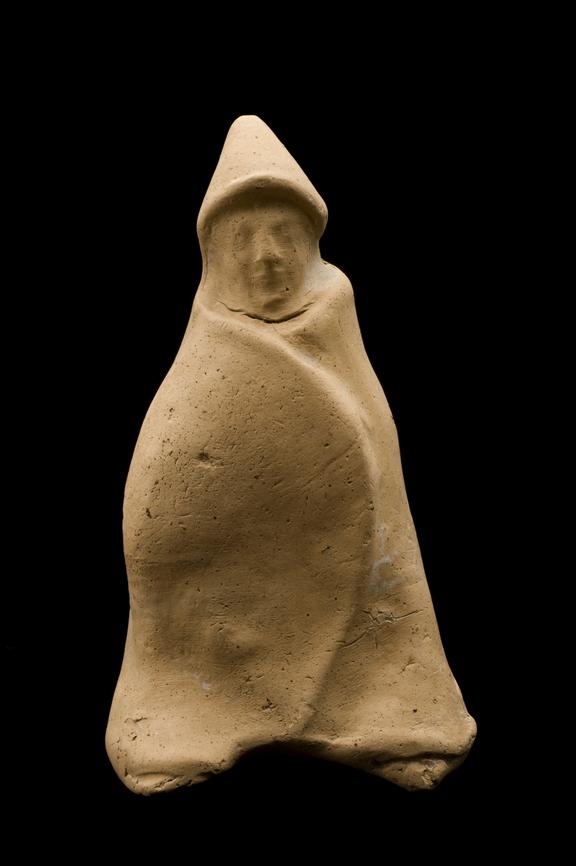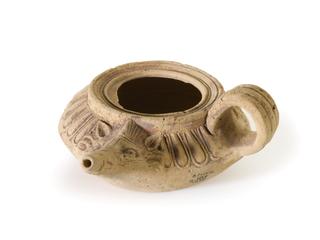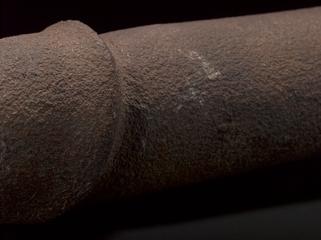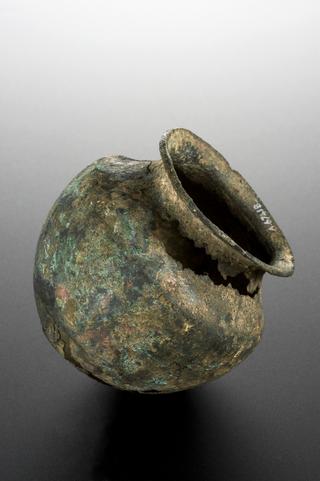
Statue of Telesphorus, Greece, 300-400 CE
- Made:
- 300-400 CE in Greece

Small terracotta statue, depicts boy genius Telesphorus, possibly from Boeotia, Greek, possibly 2nd to 3rd centuries
Telesphorus is always represented as a hooded male child with no arms or legs visible. He was worshipped as a god who accompanies Asklepios, the Greco-Roman god of medicine and healing, and he may be his son. Telesphorus signified the end or recovery from an illness. This terracotta statue is possible from the Boeotia region in the centre of ancient Greece.
Details
- Category:
- Classical & Medieval Medicine
- Collection:
- Sir Henry Wellcome's Museum Collection
- Object Number:
- A655520
- Materials:
- complete and terracotta
- Measurements:
-
overall (standing upright): 95 mm x 50 mm x 35 mm, 0.066 kg
- type:
- statue
- credit:
- Sotheby's




